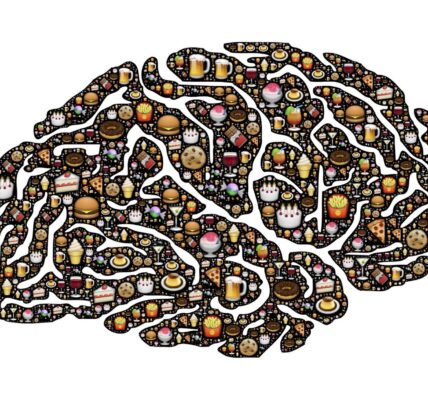Models of Addiction: Chronic Brain Disease, Biased Choice, and the Contextual Model

What an interesting week of reading! Since the Labor Day holiday, we have run several posts at AddictionNews exploring the theory that addiction is not a chronic brain disease. We’ve been following along in the forthcoming book, A New Approach to Addiction and Choice, by Dr. Reinout W. Wiers, covering such subjects as Dr. Wiers’ “biased choice” theory of addiction, and how to strengthen resilience in children and adolescents.
In the midst of all that, The New York Times dropped a massive piece entitled, “Rethinking Addiction as a Chronic Brain Disease.” It does not even mention Dr. Wiers, his lab, or his new book. Today at AddictionNews, we will make our way through Jan Hoffman‘s deep dive into The New York Times and see how it compares to our weeklong coverage.
Hoffman documents a bit of a backlash against the chronic brain disease model of addiction that still dominates U.S. public policy, noting that “[U]nlike diseases such as Alzheimer’s or bone cancer or Covid, personal choice does play a role, both in starting and ending drug use.”
One of the main knocks against the chronic brain disease theory is that it makes it sound like there’s no hope for someone once addicted. Of course, that was never the intent of the chronic brain disease theory. To be fair to those researchers, they have documented that addiction results in damage to brain systems that is difficult to overcome and possibly impossible to erase completely.
Dr. Wiers, in his hybrid “biased choice” theory, says we are free to abuse substances or not, but those choices can inflict damage that is difficult to undo: “[A]ddictive substances act directly on the underlying brain mechanisms, with the results that they make repeated use of the same substance attractive.” The “biased choice” theory falls in between “it’s all your fault” and “you had no choice.”
Hoffman interviews Dr. Kirsten Smith from the Department of Psychiatry and Behavioral Sciences at Johns Hopkins University School of Medicine and co-author of a newly published review in the journal Psychopharmacology about the choice model of addiction. The paper comes to the same hybrid conclusion as Dr. Wiers:
[A]ddiction is neither the individual’s moral failing nor an internal uncontrollable urge but rather is the result of environmental contingencies that reinforce the behavior.
Dr. Smith and her co-authors present the case for a contextual model of addiction that takes into account both the genetics of addiction and the environment in which the behavior takes place. Dr. Robert E. Pretlow, publisher of AddictionNews, has posited a “Unified Theory of Addiction” that is very much in line with the contextual model. The Unified Theory says that addiction is the result of inappropriate displacement of stress perceived by the substance abuser. Compare that description with what Hoffman writes about the contextual model:
[It] is often about seeking an escape from intractable conditions such as a fraught home, undiagnosed mental health and learning disorders, bullying or loneliness. Generations of family addiction further tip the scales toward substance use.
When substances are used to temporarily experience relief from pain, their use can quickly become habitual unless the sufferer finds a better way to cope with the pain. They end up with both the pain and a hard-to-break dependency. The preferred method for treating substance use disorders, just like the “biased choice” model, is a hybrid. Medications are used to blunt withdrawal symptoms and break physical addiction, and cognitive behavioral therapy (CBT) is used to help build the patient’s self-esteem and self-regulation capabilities.
Dr. Smith’s review builds on the work of researchers at the Center on Alcoholism, Substance Abuse, and Addictions in the Department of Psychology at the University of New Mexico. In a 2017 review in the journal Clinical Psychology Review, they examined strengthening self-regulation as a mechanism of behavioral change for addiction disorders and found the results inconsistent. They propose a contextual model of self-regulation that is in sync with the work of Drs. Smith, Wiers, and Pretlow:
[T]his model emphasizes the dynamic interplay between self-regulatory behavior and contextual factors during the addictive disorder change process, rather than assuming that various facets of self-regulation are uniformly beneficial for all individuals and in all situational contexts.
The new approach to addiction and choice, to quote the title of Dr. Wiers’ book, is not to confine recovery research to what is going on inside the brain and the body, but also to fund research into the interplay between addiction and environment. In the coming days, we will continue to present summaries of Dr. Wiers’ chapters concerning the treatment of addiction.
Written by Steve O’Keefe. First published September 11, 2024.
Sources:
“Rethinking Addiction as a Chronic Brain Disease,” The New York Times, September 3, 2024.
A New Approach to Addiction and Choice: Akrasia and the Nature of Free Will, by Reinout W. Wiers, to be published by Routledge in 2025.
“Heterogeneity in choice models of addiction: the role of context,” Psychopharmacology, September 2024.
“A contextual model of self-regulation change mechanisms among individuals with addictive disorders,” Clinical Psychology Review, November 2017.
Image Copyright: rawpixel, used under Creative Commons license.




